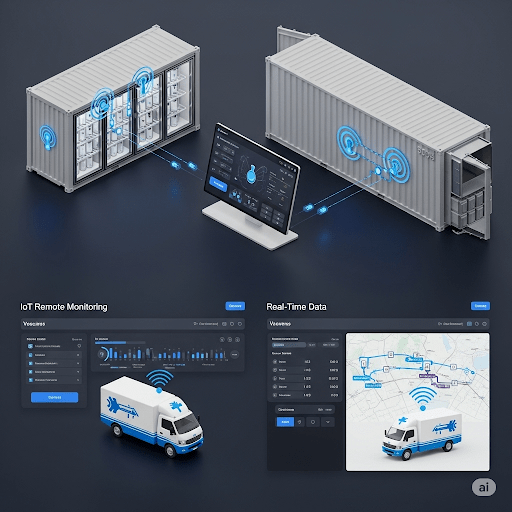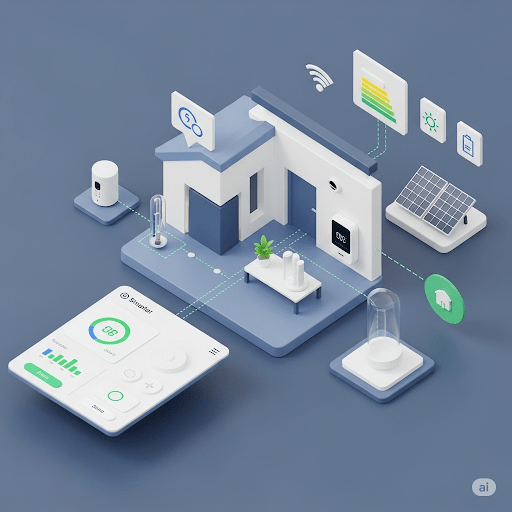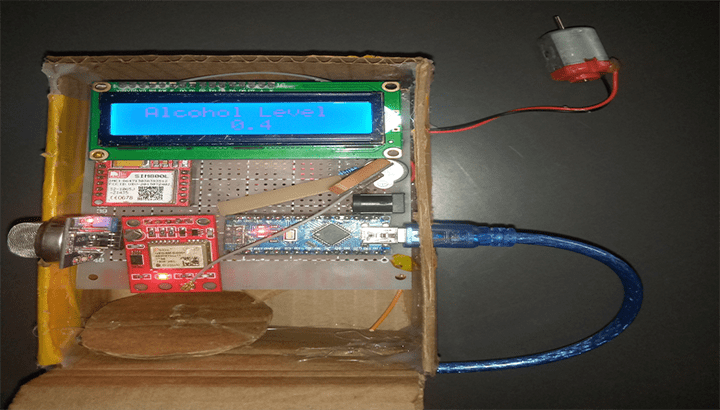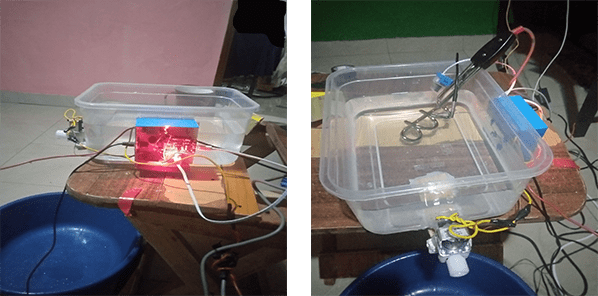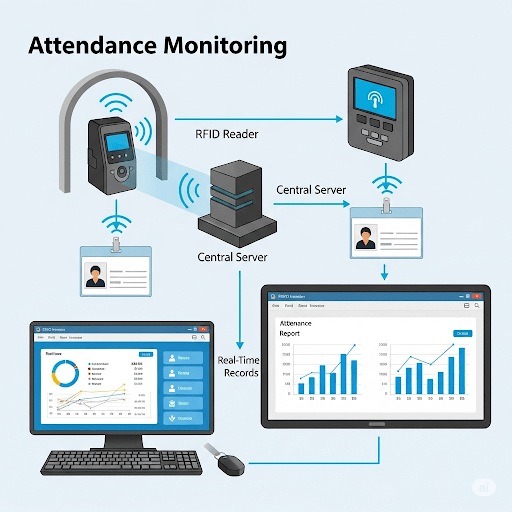Security and Surveillance System

Complementing the video surveillance component, the Security and Surveillance System incorporates motion sensors strategically deployed throughout the facility to detect any unauthorized entry or suspicious activity promptly. These sensors serve as the frontline defense, triggering immediate alerts to security personnel, thereby enabling swift and decisive responses to security incidents. Furthermore, the system integrates state-of-the-art access control mechanisms, such as electronic keycards or biometric scanners, to regulate access to restricted areas within the facility. By leveraging IoT-enabled access control systems, the Security and Surveillance System ensures that only authorized personnel can access sensitive infrastructure components, mitigating the risk of insider threats and unauthorized access.
One of the defining features of the Security and Surveillance System is its remote monitoring and management capabilities, facilitated by a centralized monitoring platform. This platform empowers security personnel to access live camera feeds, receive real-time alerts, and manage security incidents from any location with internet connectivity. Such flexibility not only enhances operational efficiency but also enables rapid response to security threats, irrespective of geographical constraints. Moreover, the system incorporates tamper detection mechanisms, utilizing IoT sensors to detect and alert security personnel of any attempts to tamper with surveillance equipment or critical infrastructure components. This proactive approach to security minimizes the risk of sabotage and ensures the integrity of the surveillance system.
Finally, the Security and Surveillance System is designed to seamlessly integrate with local law enforcement or emergency response agencies, facilitating coordinated responses to security incidents or emergencies. By establishing robust communication channels between the security system and external stakeholders, the system enhances overall safety and security measures, safeguarding telecommunications facilities against a wide range of potential threats. In summary, the Security and Surveillance System represents a paradigm shift in the protection of critical infrastructure, leveraging IoT technologies to deliver proactive, real-time security solutions tailored specifically for the telecommunications industry.
Key Components and Features:
- Video Surveillance: Install high-definition video cameras equipped with IoT connectivity to provide real-time video monitoring of key areas within and around telecommunications facilities.
- Motion Detection: Integrate motion sensors with the surveillance system to detect and alert security personnel of any suspicious activity or unauthorized entry.
- Access Control: Implement IoT-enabled access control systems, such as electronic keycards or biometric scanners, to regulate access to restricted areas and track employee movements.
- Remote Monitoring and Alerting: Develop a centralized monitoring platform that enables security personnel to remotely access live camera feeds, receive real-time alerts for security breaches, and take appropriate action as needed.
- Tamper Detection: Utilize IoT sensors to detect tampering or sabotage attempts on surveillance equipment or other critical infrastructure components, triggering immediate alerts and responses.
- Integration with Emergency Services: Integrate the security and surveillance system with local law enforcement or emergency response agencies to facilitate rapid response to security incidents or emergencies.
Problem Statement: Telecommunications facilities, including data centers, equipment sites, and network infrastructure, are critical assets that require robust security measures to protect against unauthorized access, vandalism, and security threats. Traditional security systems often lack the real-time monitoring, remote accessibility, and automated alerting capabilities necessary to effectively safeguard these facilities. As a result, there is a pressing need for an advanced security and surveillance solution tailored specifically for the telecommunications industry.
Related project idea for free
IOT remote monitoring solutions for efficient store and delivery of temperature-sensitive vaccines
Pandemics such as the COVID-19 pandemic cause a significant loss of human life around the world, and they constitute a very big challenge to public health. The lack of efficient and well-monitored vaccination systems leads to people's death and impact the economy of individuals and of the country...
Read more>>Design of an energy efficient system for smart home
Technology has been developing every day in human life. The need for the advancement of technology is to lead human life comfortably. The use of the Internet of Things is changing the face of development in all sectors of human life and it can be used for the successful implementation of energy-e...
Read more>>Drunk driving detection - Safe driving IOT project
The main purpose behind this project is “DRUNK DRIVING DETECTION”. Now a day’s many accidents happening because of the alcohol consumption of the driver or the person who is driving the car. The drunk driving is a major reason of accident in almost all countries all over the world....
Read more>>Swimming Pool Monitoring System, Save a kid from drowning - Arduino project with IOT
The objective behind designing this swimming pool monitoring system is actually based on my commitment that during the ongoing summer and during the summers coming ahead, we do not have to let any child drown. So, you are requested guys to share this content as much as possible, so that more an...
Read more>>Attendance Monitoring System using RFID - IOT project
Attendance Monitoring System means computerized software along with special devices to capture attendance data such as arrival time, absence, or presence of the student in the classroom or in the examination room; this project is developed by using Radio Frequency Identification (RFID) syste...
Read more>>
